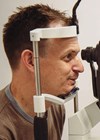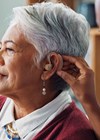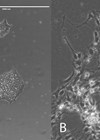Audiology features
In conversation with Helen and De Wet in Paris: cochlear implants in the year 2074
The World Congress of Audiology (WCA), held in Paris, France, in September 2024, provided a fantastic opportunity to reconnect with colleagues from around the globe. I took the chance to sit outside in the sunshine with De Wet Swanepoel from...
Audiology and ophthalmology: a comparative perspective on diagnostics and patient care
What are the similarities and differences between audiology and ophthalmic practices, and what can we learn from each other? Rosalyn Painter finds out. I’m here with Chris Gordon and Anthony Vukic from Gloucestershire Hospitals NHS Foundation Trust to find out...
Optimising hearing aid solutions for tinnitus sufferers: essential factors to consider
A tailored approach combining counselling, sensory management and perceptual training can improve the effectiveness of hearing aids in managing tinnitus for individual patients. Hearing aids are useful tinnitus therapy tools, according to tinnitus management guidelines. However, there are few published...
Why hearing above 8 kHz matters more than you think
This review explores the significance of extended high-frequency hearing loss (above 8 kHz) and why it may be worth doing clinically more frequently. There are many conditions that may hide underneath a normal audiogram, and one of the easiest to...
Silent crisis: the exodus of hearing healthcare professionals from the Philippines
The migration of Filipino audiologists and otolaryngologists abroad is worsening the shortage of hearing specialists. Improving local conditions is vital to retaining talent. As ear and hearing healthcare professionals practising in the Philippines, we have seen the struggle in keeping...
Beyond hearing aids: early interventions in hearing care to lower dementia risk
Published in print under the titleHearing care and dementia: professional insights on the new Lancet Commission findingsThe Lancet Commission on ‘Dementia prevention, intervention and care: 2024 report’ highlights a list of potential modifiable factors to reduce dementia risk. As with...
Aligning hearing and cognitive healthcare in older people
Published in print under the titleHearing care and dementia: professional insights on the new Lancet Commission findingsThe Lancet Commission on ‘Dementia prevention, intervention and care: 2024 report’ highlights a list of potential modifiable factors to reduce dementia risk. As with...
Balance and vestibular disorders in children
Discover the world of paediatric vestibular assessment and management from the team at Alder Hey Children’s Hospital, which is revolutionising services in this field. Dizziness and balance problems generate significant morbidity in children of all age groups. Vestibular disorders are...
Commentary: dementia, hearing loss, and the danger of professional rabbit holes
The Lancet, a world-leading general medical journal, has a global impact. Its commissioned report into dementia prevention, intervention and care has been cited over 6000 times and has further been reviewed and updated in 2020 and now 2024. Here, Profs...
The changing landscape for hearing loss therapeutics: novel advances of gene and cell therapies
Recent years have seen advances in hearing loss therapeutics, with novel treatments trialled in humans, and others nearing promising first-in-kind clinical trials. First successful clinical trials for a specific form of genetic hearing loss Very exciting news has emerged in...
Mindfulness and tinnitus: a path to peace in the present
How does training the mind to be present in the here and now help patients with troublesome tinnitus? James Jackson discusses mindfulness and its place in tinnitus management. Although definitions can be more complex, tinnitus is the perception of sound...
In conversation with Sam Lear, BAA President: leading audiology forward
Dr Samantha Lear is the current British Academy of Audiology President, and Senior Audiology Policy Advisor at the National Deaf Children’s Society. With reviews ongoing in paediatric audiology in England and Scotland, Sam is ideally placed to lead the profession....

















